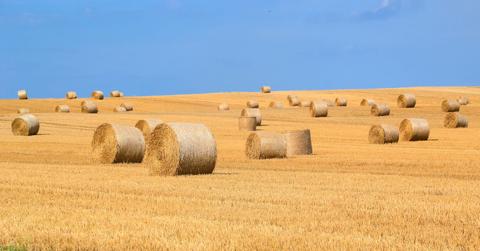Advocates Push For Farmland To Eliminate Carbon Within Its Growth Cycle
Soil is an untapped resource in the fight against climate change, if we could just pay attention to it.
Updated May 23 2019, 9:59 a.m. ET
Agriculture is an aspect of climate change that often gets overlooked as politicians discuss energy production and explore ideas about "clean coal." But, according to Dr. Louis Verchot, who researches soil at the Farmenternational Center for Tropical Agriculture, it accounts for 24 percent of greenhouse gas emissions. Dr. Verchot argued in an essay on Quartz that we should consider that number an opportunity, rather than an insurmountable challenge.
It's difficult to make changes worldwide in agriculture, because different countries have different issues with production. It's not just because of regional difference in soil and yield, it's that the levels of technology for farming are extremely varied. As you might expect, North American farmers are coming to rely more and more on technology. Many farmers have even incorporated drones with sensors and cameras to monitor things like moisture levels and soil health.
Farmers in developed countries have an interest in hanging onto their technology, and they want to mitigate their contribution to greenhouse emissions without eliminating the use of equipment that produces it. Meanwhile, farmers in countries without access to heavy machinery are often the ones most vulnerable to the sorts of "natural disasters" that have become the calling card of climate change. Droughts, floods, fires, and hurricanes are all things that can end a farmer's business, and destroy food yields for entire communities.
Dr. Verchot references a paper published by Scientific Reports that indicates a potential solution that could satisfy everyone. Soil carbon sequestration is a process that sucks carbon out of the air and puts it into the soil, which is actually a good thing. Many plants do better with carbon in the soil; to them it is tasty, while it's poison in the air to us. By encouraging soil carbon sequestration practices amongst farmers, we're asking them to use something they already have to fight climate change—lots of land.
It would still be good to limit the use of heavy machinery, as over-tilling releases the carbon. Mulching the earth with harvested maize stalks and using those drones to develop a better soil balance that would absorb the carbon was also suggested. North America is best suited to capturing carbon this way.
But Dr. Verchot says that in places like Africa, which has about 1,615,565 million acres of cropland, farmers could mix legume plants with pasture vegetation, which would be good for livestock yield too, as legumes increase growth. He also suggests agroforestry. Trees help to put carbon back in the soil, and an orchard would diversify produce, which is good in times when weather is unpredictable.
The International Center for Tropical Agriculture seems to just want attention to be paid to soil—we're literally walking on top of a potential solution to carbon emissions.
